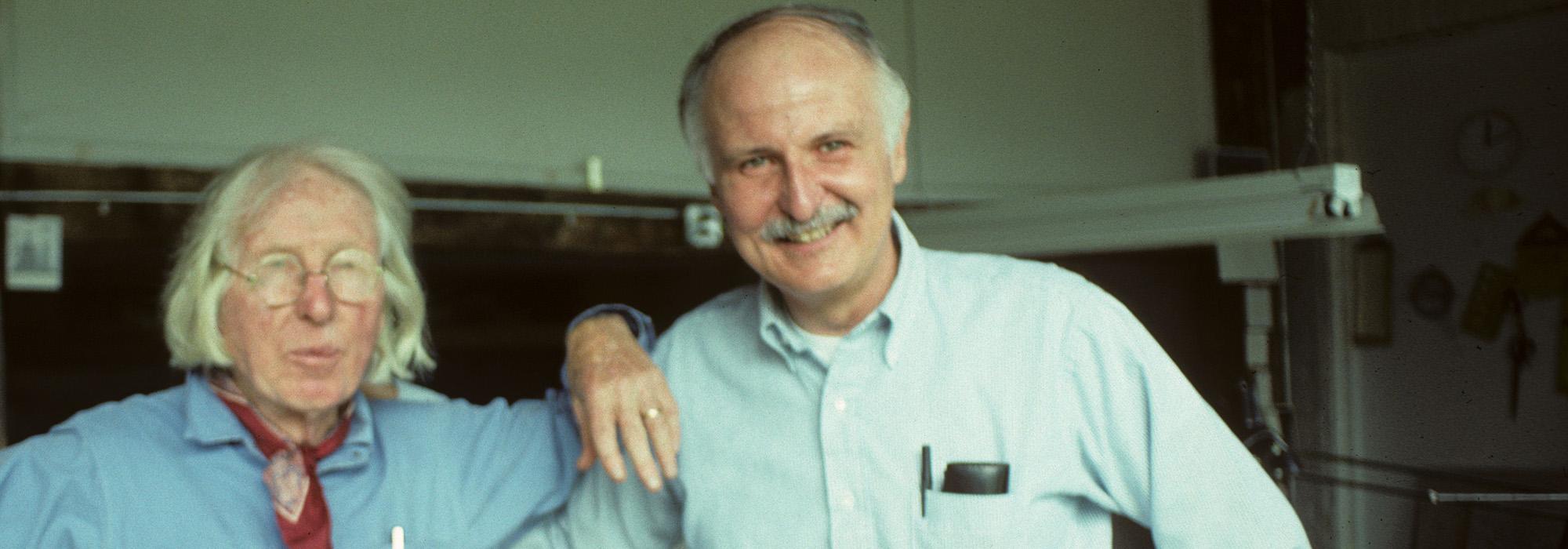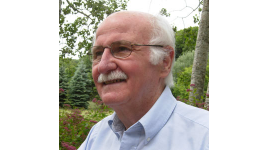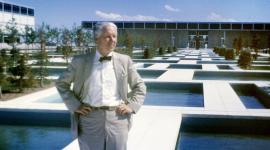Office of Dan Kiley Subject of New Video Oral History – First Installment Features Landscape Architect Joe Karr
Media Contact: Nord Wennerstrom | T: 202.483.0553 | M: 202.225.7076 | E: nord@tclf.org
Office of Dan Kiley is the 15th in the ongoing, award-winning Pioneers of American Landscape Design® video oral history series that documents, collects, and preserves first-hand information from pioneering landscape architects/educators
Washington, D.C. (April 25, 2018) – The Cultural Landscape Foundation (TCLF) today announces the release of the first installment of a Pioneers of American Landscape Design® video oral history about the Office of Dan Kiley, featuring landscape architect Joe Karr, who worked in Kiley’s office from 1963 to 1969. Kiley, a Modernist landscape architect and the subject of TCLF’s traveling photographic exhibition The Landscape Architecture Legacy of Dan Kiley, designed significant projects throughout the United States and is considered one of the most important practitioners of the twentieth century. Subsequent installments will feature landscape architects Ian Tyndall and Peter Ker Walker.
This is the 15th installment in the award-winning Pioneers series, which TCLF launched in 2003 to document, collect, and preserve first-hand information from pioneering landscape architects and educators. The 37:45-minute long Karr installment is parsed into eleven one-to-five-minute clips and organized under the themes of “biography,” “design,” and “projects.” During his tenure at the Office of Dan Kiley, Karr worked on some of the firm’s most significant commissions including the Ford Foundation in New York City and the Oakland Museum of Art in California. The oral history also includes Karr-designed projects created after his tenure with Kiley. In addition to producing and distributing the video oral history, TCLF has produced and published a written transcript of the oral history and collected a series of written recollections from friends and colleagues.
The clips include four on biography (1-4, below), three on design (5-7, below), and four on projects (8-11, below); titles below are hot linked to the respective clips:
- Stanley White at the University of Illinois: Karr’s recollections about an influential professor who spurred his students’ creativity through seemingly random but ultimately effective exercises. [3:08]
- Wings Point: Karr discusses what it meant to work for the Office of Dan Kiley at Wings Point, VT. The location on Lake Champlain was a major inspiration for the team, shaping not only their design work but also their personal lives. [4:20]
- We Trusted Dan: Kiley’s management style and frequent travel promoted collaboration, camaraderie and self-confidence among his team of 25-to-30-year-old designers. [2:56]
- Columbus and Dan Kiley: How did Columbus, IN become a Modernist mecca? Landscape architect Joe Karr discusses the creation of the list of the preferred architects who worked in Columbus – a list that only included one landscape architect, Dan Kiley, with whom Karr worked from 1963 to 1969. [1:17]
- A Kiley Landscape: Design isn’t predetermined; it evolves out of the site, the program and the client’s needs. Moreover, landscape architecture and architecture are interwoven, not separate. [3:04]
- The Right Tree: Kiley knew trees – their structure, texture, color, form and hardiness, and their appropriateness for a designed landscape. [2:13]
- Geometry: The order of Kiley’s geometric designs took their cues, in part, from the inherent geometry found in natural forms, such as snowflakes. [2:28]
- Oakland Museum: Karr’s initial job was the museum’s roof garden, one of the first in the country, which had nearly 200 planters on multiple levels. [5:17]
- Ford Foundation Atrium: Installing 35-foot-tall magnolia trees that each weighed nine tons on a steep building site was one of many challenges faced in creating a garden in a 120-foot-tall atrium. [4:54]
- Ameritech Center: Careful teamwork was necessary to create a 200-acre corporate campus with extensive exterior and interior gardens, including parking structures hidden by the landscape. [3:12]
- Abraham Lincoln National Cemetery: Constructed on the site of a former 24,000-acre munitions plant, the landscape integrates a second-growth forest to provide a serene setting for veterans and their families. [4:46]
The Karr portion of the Office of Dan Kiley oral history was shot in Washington, D.C., May 2017. The goal of the oral history series, which received the American Society of Landscape Architects’ (ASLA) 2010 Award of Excellence (Communications), is to make each practitioner’s story available to future generations of stewards, students, designers, researchers, and heritage travelers. Charles A. Birnbaum is the series executive producer and conducted the interviews; Barrett Doherty, TCLF’s visual content director, conducted the videotaping and post-production editing; and Brian Cho scored the oral history.
About Joe Karr
Karr (b. 1938), a native of Rochelle, Illinois, entered the University of Illinois at Urbana-Champaign in 1956 to study city planning but soon changed his focus to landscape architecture. He received his B.F.A. in Landscape Architecture in 1960 and soon thereafter headed to the University of Pennsylvania as a graduate student to study with landscape architects Ian McHarg and Karl Linn. In the spring of 1963, Karr joined the office of landscape architect Dan Kiley in Charlotte, Vermont.
Dan Kiley and the natural beauty of Vermont had a profound effect on Karr’s sense of aesthetics and his professional development. He was particularly influenced by Kiley’s approach to design. Karr, like Kiley, felt that architecture and landscape architecture were interconnected. He recognized that architects and landscape architects were both designers and manipulators of space and that the difference between them was primarily in the materials that each used to form and modify space.
Karr left the Kiley office in the spring of 1969 to start his own practice, Joe Karr and Associates, as a division of the Chicago architectural firm of Harry Weese & Associates. Karr’s office designed more than 700 landscapes for universities, colleges, corporations, hospitals, senior-living communities, institutions, parks, cemeteries, industrial sites, residential complexes and single-family homes. Karr’s work has been published in numerous books and publications. He served on boards, including the American Society of Landscape Architects Accreditation Board, and was named a Fellow of the American Society of Landscape Architects in 1992. After 35 years of practice he closed his office in 2004 and continued working as a landscape architectural consultant through 2011, retiring in 2012.
“With this oral history we begin to lift the veil on the talented landscape architects who worked with Dan Kiley on influential projects throughout the country,” said Charles A. Birnbaum, TCLF’s President & CEO.
The oral history was made possible with support from by the Hubbard Educational Foundation and Hoerr Schaudt Landscape Architects, and other donors. The American Society of Landscape Architects is the Annual Sponsor.
About The Cultural Landscape Foundation
The Cultural Landscape Foundation (TCLF), founded in 1998, is a 501(c)(3) non-profit that connects people to places. TCLF educates and engages the public to make our shared landscape heritage more visible, identify its value, and empower its stewards. Through its website, publishing, lectures and other events, TCLF broadens support and understanding for cultural landscapes.
# # #





